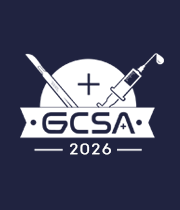Eye Muscle Repair Surgery
Eye Muscle Repair Surgery, also known as strabismus surgery or eye muscle surgery, is a procedure performed to correct misalignment or crossed eyes (strabismus). This surgical intervention aims to realign the muscles responsible for eye movement, enhancing coordination between both eyes for improved vision and aesthetics. Typically conducted under general anesthesia, the surgeon accesses the eye muscles by making small incisions in the tissue surrounding the eye. Using delicate instruments, they adjust the length or position of the eye muscles to restore proper alignment. This might involve tightening or loosening specific muscles to achieve the desired balance in eye movement. The procedure's success often depends on precise measurements and calculations to determine the extent of muscle adjustment necessary for optimal alignment. Post-surgery, patients might experience mild discomfort, swelling, or temporary double vision, which usually subsides as the eyes adapt and heal. Rehabilitation after eye muscle repair surgery often involves eye exercises and visual therapy to strengthen the affected muscles and retrain the eyes to work together effectively. In some cases, additional surgeries or adjustments might be needed for optimal results. Ultimately, eye muscle repair surgery aims to correct strabismus, improving eye alignment, depth perception, and overall visual function, thereby enhancing a patient's quality of life and confidence in their appearance.



Title : Spontaneous colonic perforation in a pediatric patient with acute febrile lllness: A case report
Abhiraj Yadav, Manipal College of Medical Sciences, Nepal
Title : Unusual cause of small bowel obstructions in infants: A warning letter to parents
Gamal Al Saied, Al-Azhar University, Egypt
Title : From panic to protocol: A ?IP on developing a paediatric breast referral pathway
Neriah Mangion, University Hospital Sussex NHS Foundation Trust , United Kingdom
Title : Improving scrotal examination in male patients presenting with acute abdominal pain: An audit and quality improvement intervention
Maab Elsaddig, University Hospital Lewisham, United Kingdom
Title : Mapping pediatric general surgery training in low and middle income countries: A scoping review
Habba Mahal, University of Alberta, Canada
Title : Improving implementation of enhanced recovery after cesarean section protocol in resource limited setting of Koidu Government Hospital Sierra Leone 2024/25. A quality improvement project from evidence to reality
Hailemariam Getachew, PIH, Sierra Leone